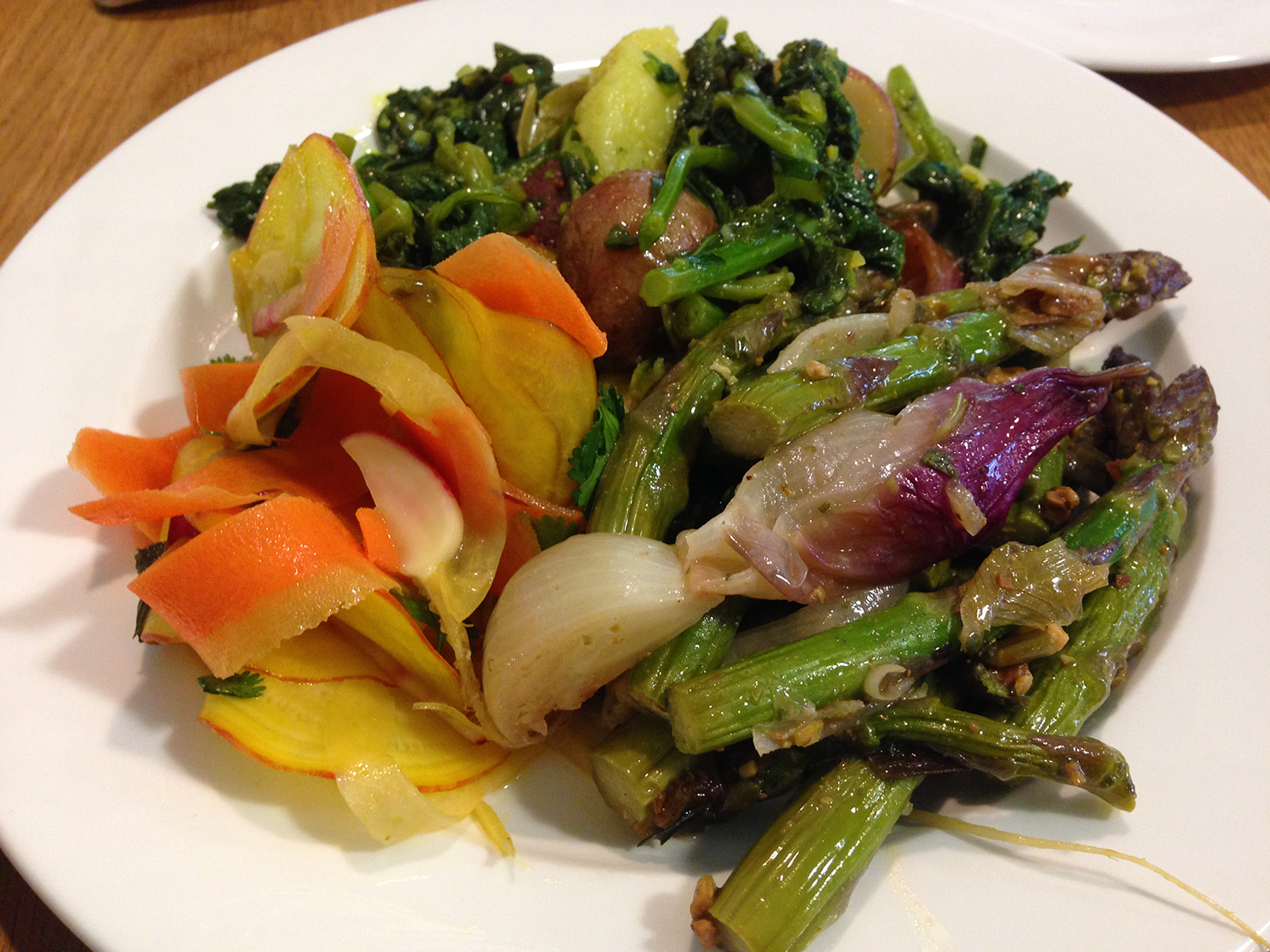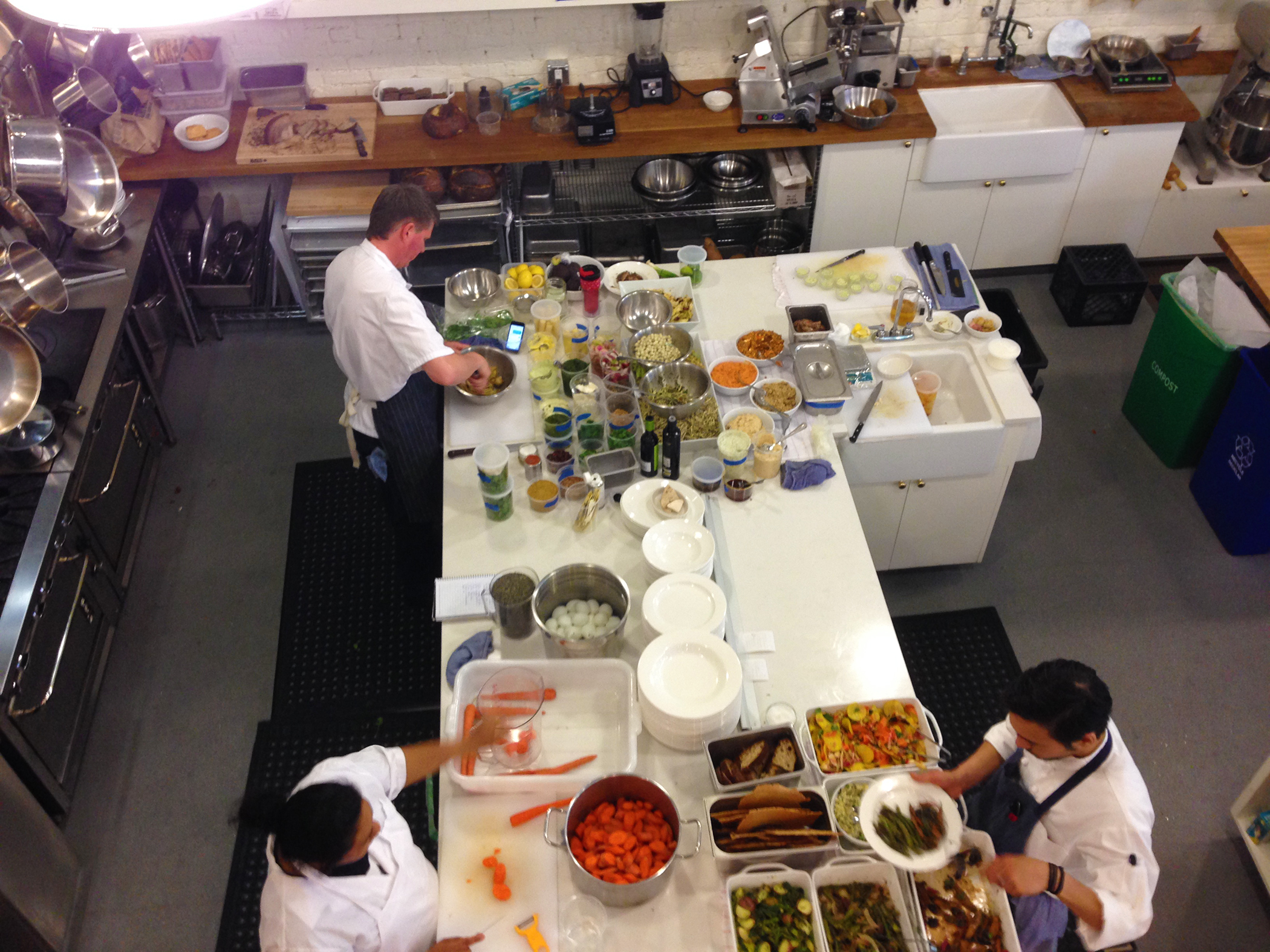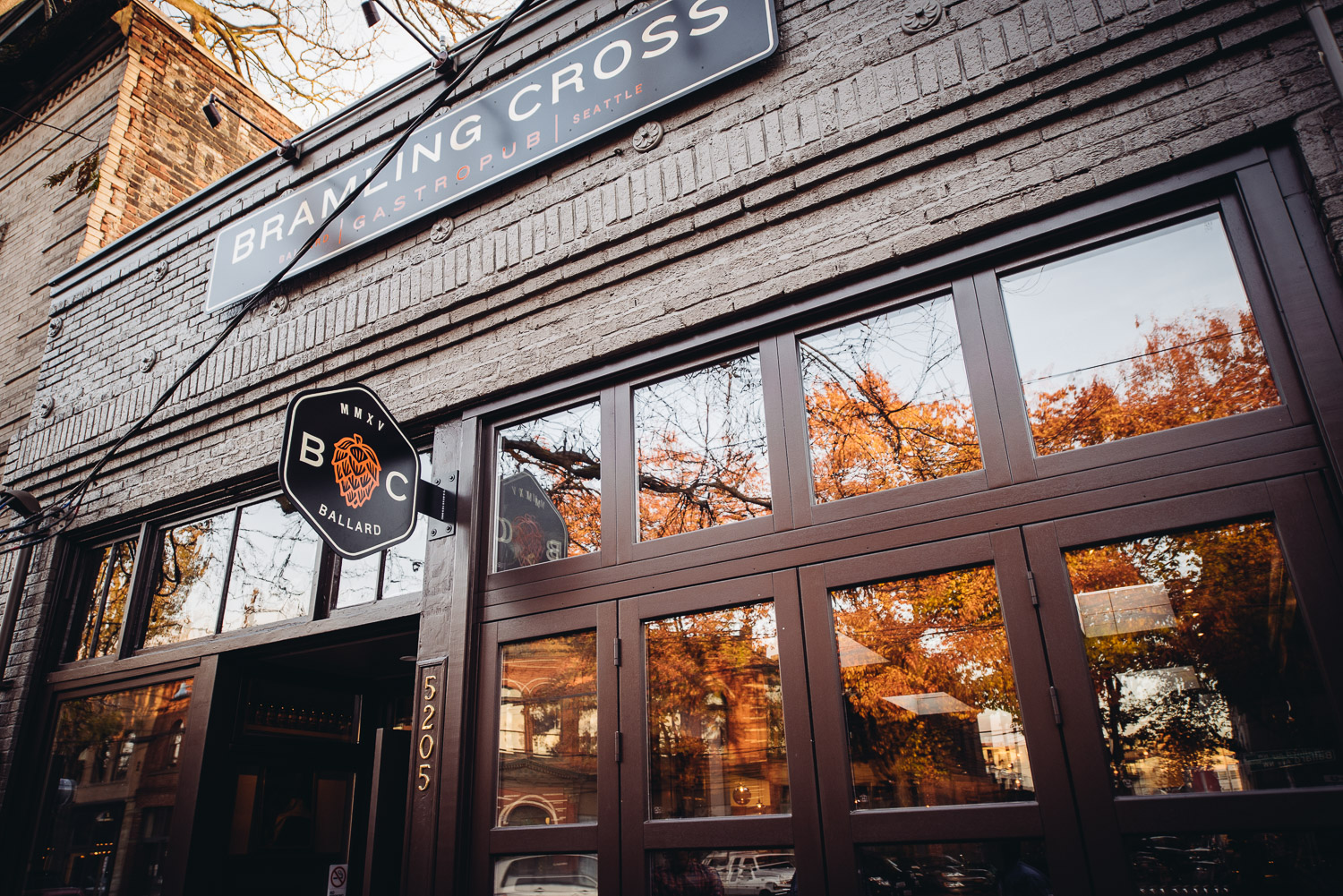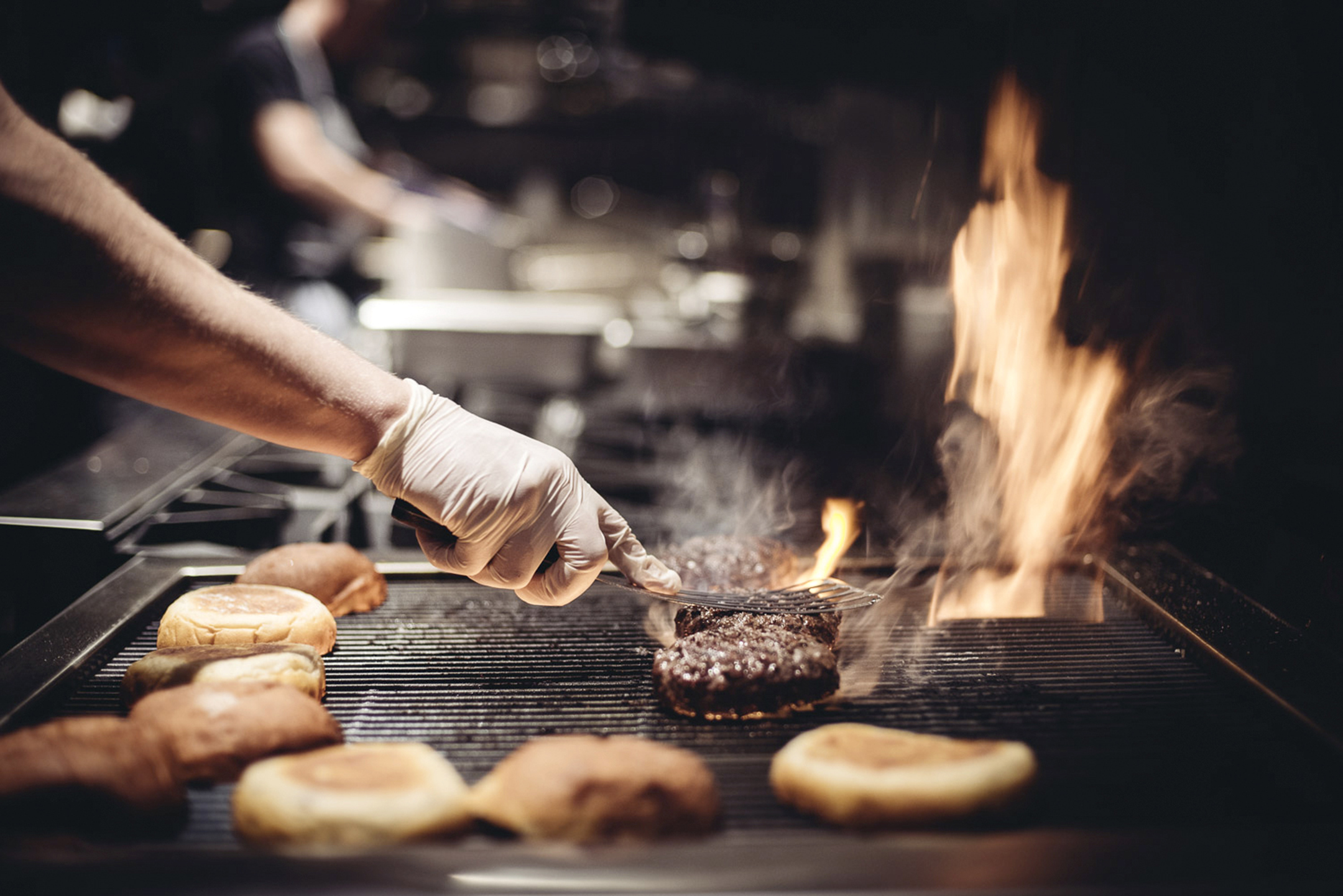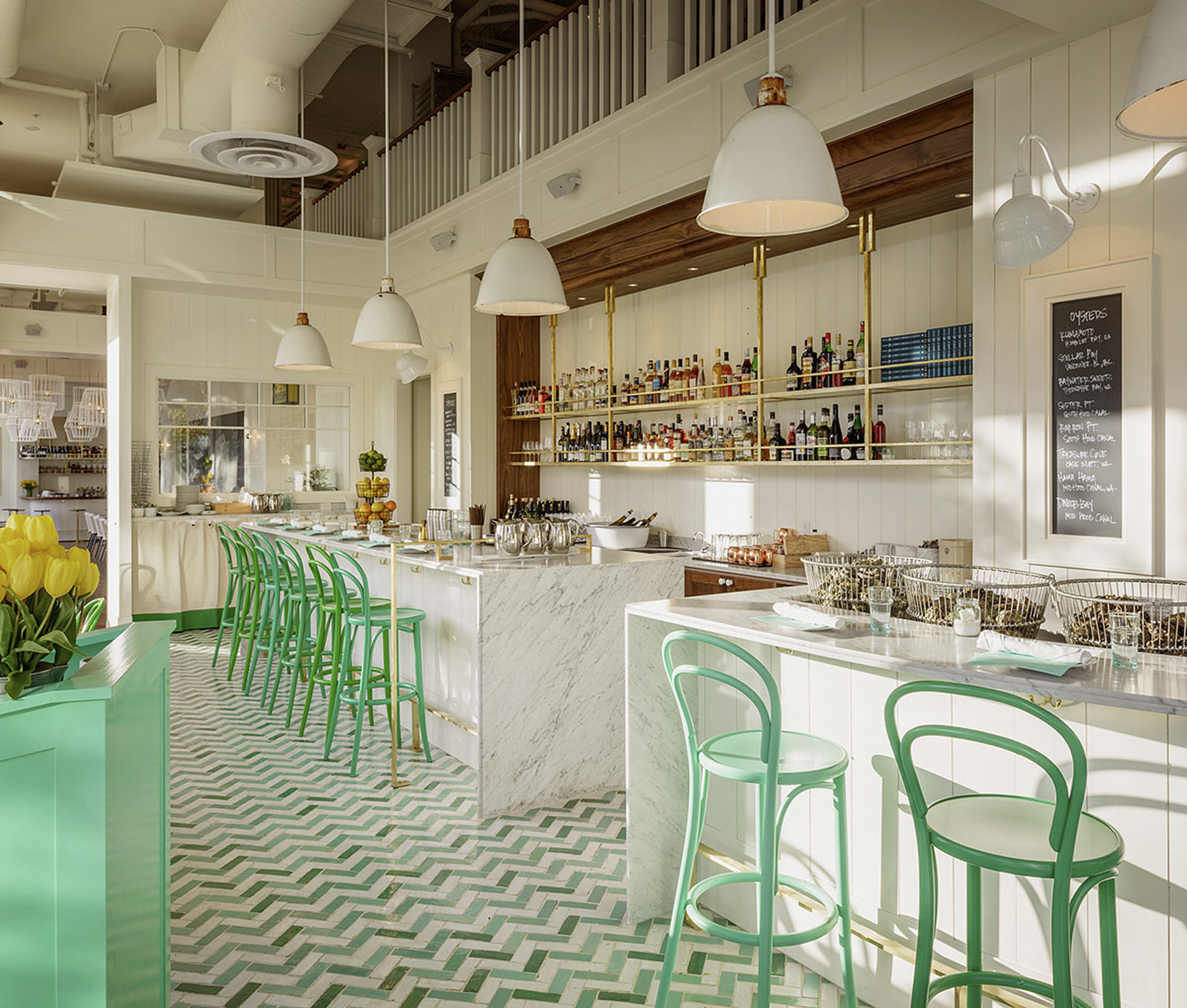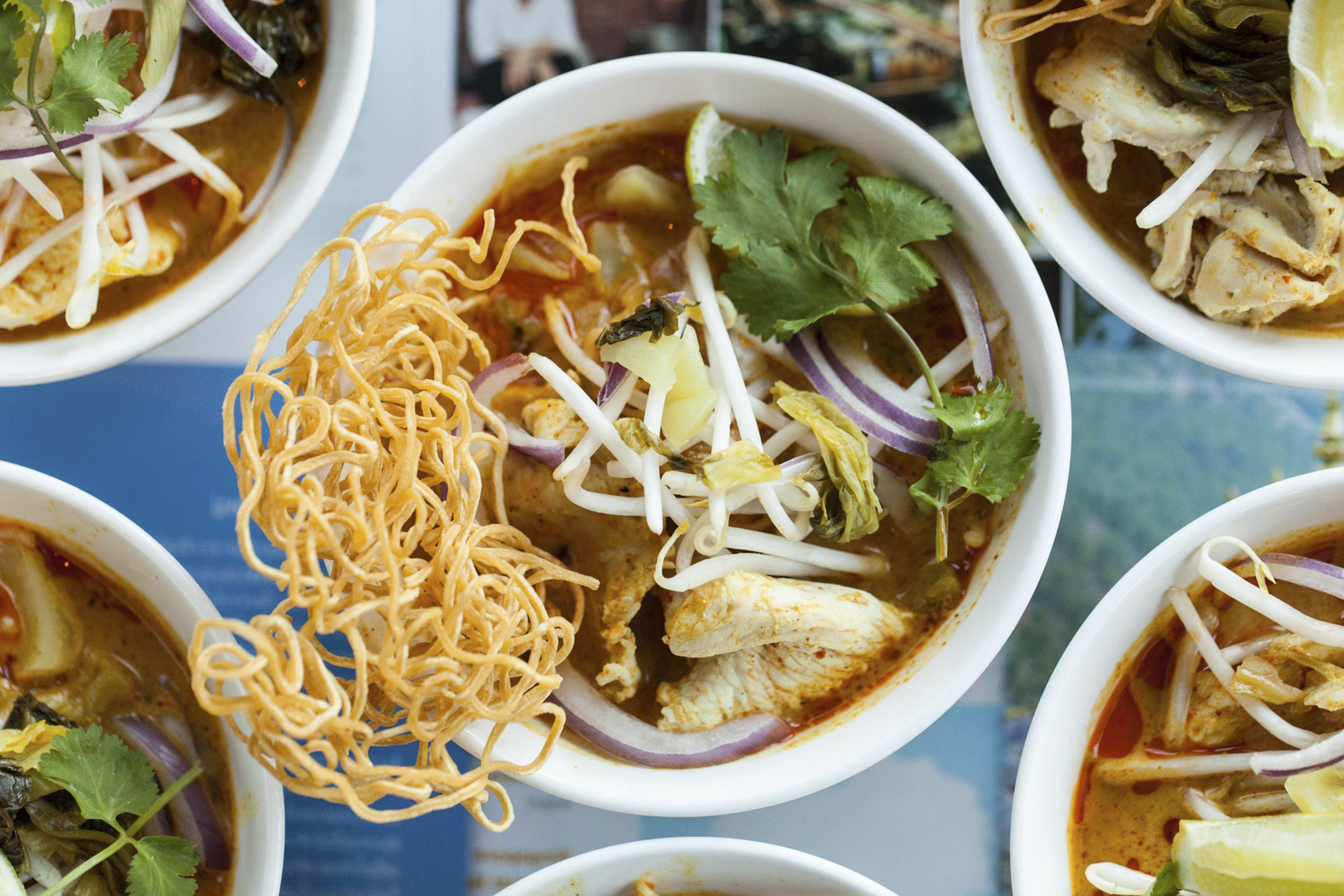Grass-green veggies and potatoes lie in an almost fluorescent yellow pool of turmeric-mustard-seed oil. A perfect oval of a just-pitted avocado sits expectantly on a spoon. Something fuchsia, which looks from above like watermelon radish, is plucked and tossed into a bowl of white beans. Big orange carrots, the kind Bugs Bunny gnaws on, fill a large bin. Into another, a bag of pale yellow parsnips are poured. The entire table is covered with small plastic containers filled with herbs and spices that seem to include almost every hue in the Pantone color chart. It looks as if a CSA cherry-picked all its very best produce, then a food stylist came in and prepared it for a layout in a Martha Stewart Living spread.
What I’m looking at, in fact, is the preparation of the lunch menu at Matt Dillon’s The London Plane—now ensconced in its real home on the southeast corner of Occidental Avenue and South Main Street (moved from the intersection’s southwest corner, where The Little London Plane, its sister wine bar, now lives). I’m sitting on the second floor of the large, lofty space, with a wonderful bird’s-eye view of the staff plating the salads, soups, and spreads that are the mainstay of this restaurant, which quadruples as a larder, floral shop, and precious boutique.
It’s bona fide herbivore eye candy. But while the menu is indeed overwhelmingly vegetarian—there are usually about four meat and seafood options, like leg of lamb, meatballs, boquerones, and King salmon lox—Dillon’s restaurant doesn’t really cater to the meat-free crowd per se. Vegetarians will certainly find lots to love here, but the food is really intended for anyone who enjoys the freshest, most exotic produce and grains—all punched up with Middle Eastern and Mediterranean spices and vinaigrettes, served in a space filled with beautiful glassware, quaint napkins, tiny jars of jam, cookbooks, vials of sea salt, and freshly cut seasonal flowers—all of it for sale.
The menu is designed for sampling a lot of things—hence their option of three small salads for $12.50 or three large ones for $16. Hint: The “small” salads are medium-sized, so two people can easily share three along with some dips and a larger salad. You’ll also want an order of their naturally leavened sourdough bread with herb butter, or a larger sampler that includes a variety of breads—like the sourdough, a cumin papadum, and rustic crackers. It’s necessary for the spreads.
On my third visit I bring a vegetarian colleague, and we order the parsnip hummus with harissa oil, a sweeter, milder version of traditional chickpea hummus. (The carrot raita with cumin and mint isn’t on today’s menu, unfortunately; I love its bombastic tang.) It’s tough choosing our three small salads, but we go with roasted asparagus and spring onions with pistachio and mint; raw beets, fennel, and radishes with ginger, lime, and cilantro; and sprouting brassicas and potatoes with turmeric and mustard-seed oil (that lovely dish I first spied from overhead). The salads come out all on one plate, which isn’t quite ideal. They begin to blur in your brain as well as on the plate, their various spices, sauces, and colors commingling a little too much. I have to serve myself each one carefully, keeping track of which I’m eating.
The raw beets are my favorite; not only are the pink, thinly sliced discs pretty, but they’re crunchy and have a subtly bitter after-note (sort of like a radicchio) that takes nicely to the sweet fennel. The sprouting brassicas taste just as you’d expect a green in the mustard family to taste, and the potatoes add heft, helping smooth out and soak up the delicious but astringent turmeric and mustard-seed oil it’s dressed in. The in-season asparagus, according to my friend, is “perfectly tender with a buttery bite and zing of citrus”—not like the reedier stalks she’s had recently.
From the large salad menu, a chicken, trofie (a thin, twisted pasta similar to orzo), and lentil salad with stinging nettles, walnuts, and feta tasted essentially like a pesto pasta salad. It was pleasant—perhaps a little too mild on its own—but a nice respite from the bold flavors of our other salads. The chicken, however, was dry—and the mere two pieces of it that I could find felt like an afterthought.
From the Meat & Seafood section, I opted for the sliced leg of lamb with tzatziki, and was disappointed when it arrived cold (the menu gave no mention of its temperature). Though the thin slices were perfectly rare and the tzatziki bite-y as it should be, I’m no fan of cold or room-temperature meat unless it’s Italian charcuterie or wedged in a sandwich. Plus, I simply craved something warm. And therein lies this restaurant’s main problem: While the cold dishes are delightful, one after another of them can become dreary. There’s a reason why, when you watch the beautiful plating happening in the kitchen, there’s virtually nothing going on atop the stove—just a pot of carrots boiling, probably being prepped for the carrot raita or the honey-roasted carrots with chard leaves and stems—both cold. (There are a couple of hot soups, and the meatballs fortunately come warm.)
Dillon has clearly opted to make the menu a pre-prep one, so don’t come expecting comfort. In that sense, the soaring, minimalist space with its precious products mimics the food—it’s all very clean and fresh. And descriptions like “our yogurt made from beautiful local whole milk” and “creme fraiche made from beautiful local cream” are overly quaint and give no real information; we’re supposed to just trust that it’s from the best, most sustainability-conscious farms. In keeping with the place’s twee craft/mercantile theme, there’s a “cold larder” where you can buy those items—as well as their whole-grain mustard and preserved lemons to go.
But The London Plane’s limitations are also its appeal. In a food culture that currently celebrates braised meats, offal, decadent brunches of hash and eggs, and desserts of fried dough, The London Plane is a palate-cleanser. Of course many restaurants in Seattle strive to bring beautiful produce to their menus, but none at this level. And, smartly, Dillon reserves the tightly curated menu for lunch: a perfect time to choose a healthier, cleaner, colder meal, along with perhaps a crisp glass of vinho verde (there are usually two white pours and a red or two) or a housemade soda, like Meyer lemon or the lovage-infused one I had—like a sweet glass of salad, in a good way.
The outlier is the dessert menu, which offers an expansive choice of decadent options ranging from rhubarb-crisp galette and cardamom cake to gateau Basque or a variety of tartlets, like lemon and chocolate caramel. And while this lineup may feel like an odd juxtaposition with the rest of the menu, it’s actually quite logical: These also can all be made ahead of time. Surprisingly, or maybe not, our chocolate tart—with buttery caramel, a rich, flaky crust, and glossy semisweet chocolate, sprinkled with sea salt—came with only the option of drip coffee to enjoy it with: austerity again winning out over cozier lattes or liqueurs.
But ultimately I like The London Plane. Only maybe once a month. And maybe only on, say, a Wednesday, and a sunny one at that. It’s a place to meet that friend who devotedly shops at Anthropologie, religiously reads magazines like Dwell, and sees every Wes Anderson movie the moment it hits theaters. It’s a style-conscious food island that, despite its pretentions, delivers some seriously good eats in a part of Pioneer Square that’s still heavy on gyro stands and sandwich shops.
nsprinkle@seattleweekly.com
THE LONDON PLANE 300 Occidental Ave. S., 624-1374, thelondonplaneseattle.com. Lunch, 11:30 a.m.–3 p.m. weekdays; brunch, 9 a.m.–3 p.m. weekends.
